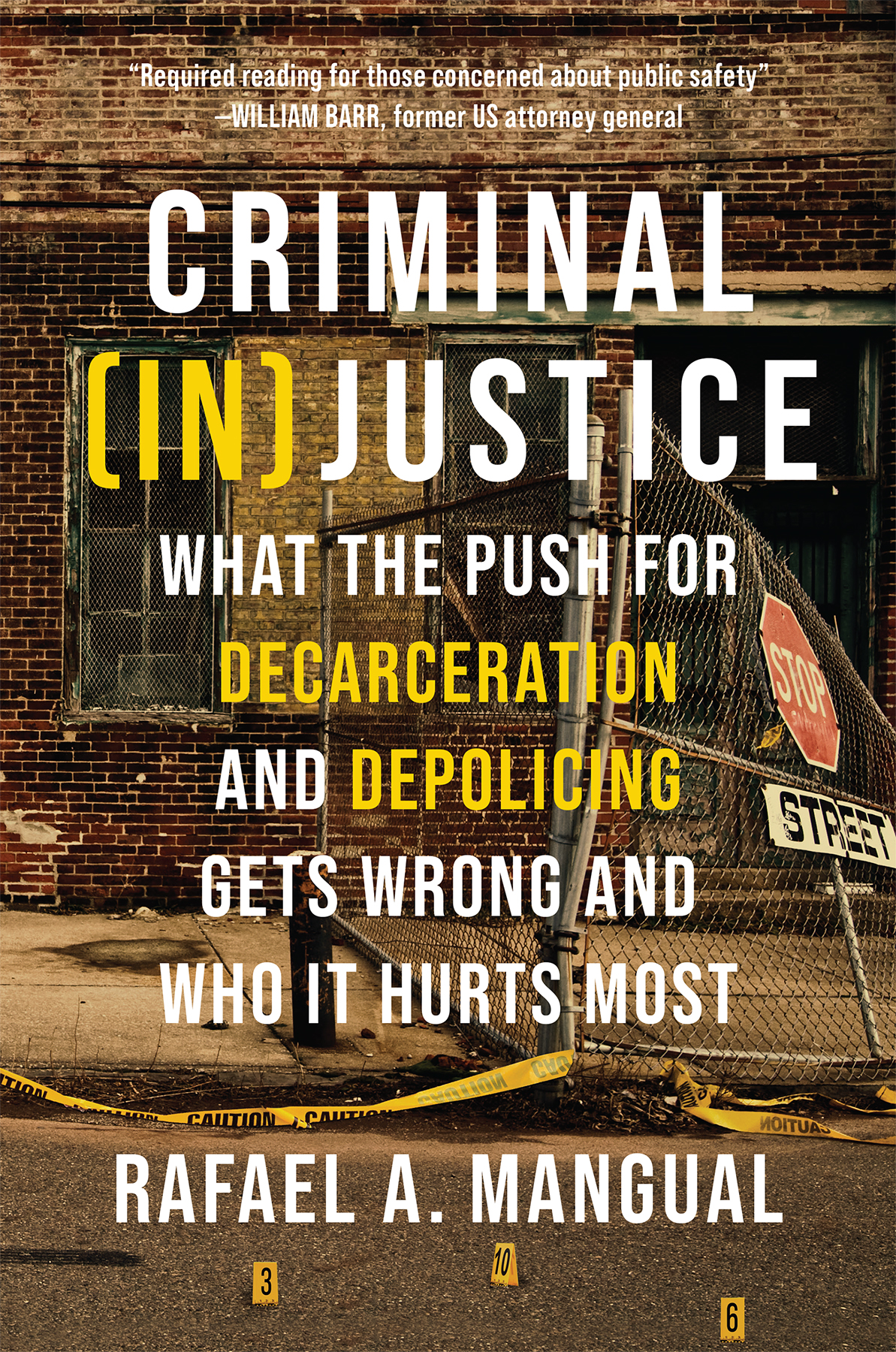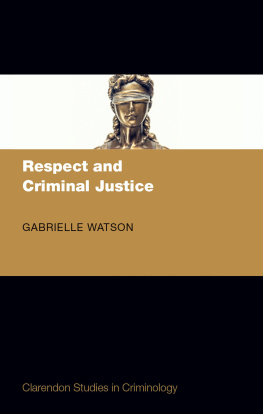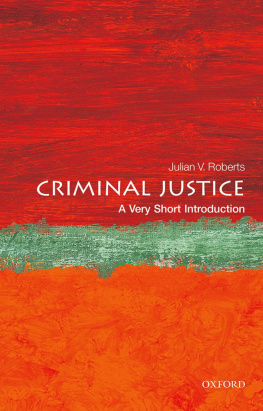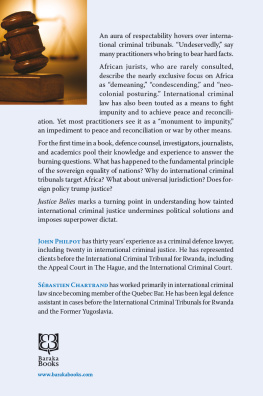
Copyright 2022 by Rafael A. Mangual
Cover design by Brock Book Design Co., Charles Brock
Cover photo Getty Images
Cover copyright 2022 by Hachette Book Group, Inc.
Hachette Book Group supports the right to free expression and the value of copyright. The purpose of copyright is to encourage writers and artists to produce the creative works that enrich our culture.
The scanning, uploading, and distribution of this book without permission is a theft of the authors intellectual property. If you would like permission to use material from the book (other than for review purposes), please contact permissions@hbgusa.com. Thank you for your support of the authors rights.
Center Street
Hachette Book Group
1290 Avenue of the Americas, New York, NY 10104
centerstreet.com
twitter.com/centerstreet
First edition: July 2022
Center Street is a division of Hachette Book Group, Inc. The Center Street name and logo are trademarks of Hachette Book Group, Inc.
The publisher is not responsible for websites (or their content) that are not owned by the publisher.
The Hachette Speakers Bureau provides a wide range of authors for speaking events. To find out more, go to www.HachetteSpeakersBureau.com or call (866) 376-6591.
Library of Congress Cataloging-in-Publication Data has been applied for.
ISBNs: 9781546001515 (hardcover), 9781546001539 (ebook)
E3-20220611-JV-NF-ORI
To the victims of criminal injustices across the country, and to my children, who I hope inherit a safer world.
Explore book giveaways, sneak peeks, deals, and more.
Tap here to learn more.

D uring the summer of 2019, I was sitting in my office and scrolling through one of my social media feeds when I came across one of the most tragic videos I had ever seen.men that was standing with Hill reentered the frame with a firearm in hand shortly after the shooters drove off. He hopped into a black Mercedes-Benz and gave chase. As Brittany Hill writhed on the street, two men drove up in another car, got out, and lifted her limp body off the ground and into the backseat of their car. Hills one-year-old could be seen sitting up on the asphalt and watching the men loading her mom into the vehicle before trying to use her not-yet-mastered ability to walk in order to get to her mother. The video ended just as another man picked the little girl up as her mother was driven off to a local hospital, where she was pronounced dead shortly after arriving.
Because the shooting was captured by a police surveillance camera, officers were able to track down and arrest two suspects within hours. Thirty-nine-year-old Michael Washington, according to news reports, was out on parole at the time of the shooting, after serving time for a drug charge. Citing prosecutors, the Chicago Sun-Times reported that Washington has nine felony convictions, including for a 2004 second-degree murder charge and a 2001 battery charge that was reduced from attempted murder in a plea agreement. Twenty-three-year-old Eric Adams, the second alleged shooter, was reported to have been out on probation at the time of the shooting, following a conviction for aggravated unlawful use of a weapon in 2018. In addition to the gun offense, Adamss Chicago police record includes arrests for public-order offenses relating to marijuana possession and gambling.
Its my experience that most fair-minded people who hear or read a story like this inevitably end up wondering the same thing: What on earth were these guysespecially Washingtondoing out on the street? A guy with priors gets convicted of aggravated unlawful use of a weapon, and all he gets is probation, while a guy with nine prior felony convictions (not to mention God knows how many arrests)two of which involved murder and attempted murdergets paroled before hes 40? From where I was sitting, the fact that these two men were free on the morning Brittany Hill was killed was outrageous. It was also incongruous with what so many criminal justice reform advocates have been saying for as long as Ive been following these issues.
Unfortunately, Hills is just one of countless stories of lives lost, of flesh torn up, and of trauma suffered because the criminal justice system failed to incapacitate repeat offenders who have made their refusal to live within the bounds of the law clear many times over. Stories like hersthose of heinous and serious crimes perpetrated by repeat offenders who could have been, but werent, behind bars at the timeillustrate what this book means by criminal (in)justice.
In post-2020 America, critiquing the inefficiencies and inequitieswhich most certainly existin the American criminal justice system (while there are technically thousands of systems in the US, I use the singular simply because it is a widely accepted colloquialism) isnt just socially acceptable; polite society demands it. Just type Silence is Violence into Google to see what I mean. I thought up the term criminal (in)justice to highlight some of the criminal justice systems most common and visible failures brought about by misguided leniency as opposed to punitiveness. So many of the tragic stories whose arcs mirror that of Brittany Hills killing implicate decisionsmade by various criminal justice actors (from lawmakers and prosecutors to judges and police executives)that resulted in the freedom of someone who could, and should, have been behind bars.
At the root of many of those decisions is a narrativeone that dominates the public discourseabout the nature of criminal justice in the United States of America. That narrative essentially boils down to an assertion that the United States can aptly be described as an oppressive carceral state that has expelled justice from every corner and crevice of its law enforcement apparatus. More specifically, the US is said to be in the midst of an over or mass incarceration crisis driven by unjustifiably aggressive overpolicing, unduly coercive overprosecution, and racism directed primarily at Black and Latino people living in the poorer, underserved neighborhoods in and around Americas cities.
Such criticisms have been leveled at this countrys criminal justice system for at least half a century. But after 2020s violent protestssparked by the deaths of now household names like George Floyd, Breonna Taylor, and Rayshard Brooksa growing chorus of professional advocates forcefully pushed this dangerously false narrative further and further into the mainstream. To the extent the assertions highlighted above werent already regarded as conventional wisdom, they certainly got there by the end of that summer. This put us on the cusp of a generational shift in how our society approaches the core government duty of securing the public against criminal violence, theft, and disorder.
The conventional wisdom, however, reflects conclusions based on fundamental misapprehensions of reality.
From police use of force and stop-question-and-frisk to bail and sentencing reform, so much of what we hear from those in favor of depolicing and decarceration is wrongwrong about both what the relevant data say and the true nature of the issues underlying many of the policy questions being debated in legislatures, classrooms, and cable news studios.
The stakes of these debates are such that these errors are (as the story this book opens with plainly illustrates) rarely harmless. What makes matters worse is that those harms are not evenly distributed throughout the country. The vast majority of Americas residents live in peaceful communities that rarely see more than one homicide in a given year, if any. To the extent that there are costs associated with the push to drastically cut back on policing and incarceration (and, as this book will forcefully argue, there are), theyre borne disproportionately by the relative handful of communitiesoften with largely low-income, minority populationsalready struggling with elevated levels of crime, disorder, and other social problems. In other words, the same people those pushing for decarceration and depolicing say theyre fighting for.







